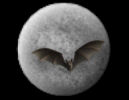
ATM Forum Message | |
| Forums: |
Atm ·
Astrophotography ·
Blackholes ·
Blackholes2 ·
CCD ·
Celestron ·
Domes ·
Education
Eyepieces · Meade · Misc. · God and Science · SETI · Software · UFO · XEphem |

 |
|
 |
||||
|
|
||||||
Be the first pioneers to continue the Astronomy Discussions at our new Astronomy meeting place... The Space and Astronomy Agora |
| Re: Observatory Window?
Forum List | Follow Ups | Post Message | Back to Thread Topics | In Response To Posted by Dianne on February 9, 1999 08:36:02 UTC |
|
: Dianne: : Your situation is a lot worse than mine! : I'm in So Cal where it is never too cold, : but sometimes wind and condensation on a : SCT front corrector are problems. : Sky & Telescope Mag from 25 to 30 years : ago had an article about observing in a : domed chamber with a window of Mylar plastic : sheet. The result was surprisingly good. : Some slight "smearing" of bright star images : was noted at high power, but it was not : excessive. It was possible to use the : telescope for most "non-critical" uses. : The thought was to make the window as thin : as possible--.003 inch mylar sheet IS THAT! : This eliminates any lateral color due to : refraction of thick glass. The mylar was : tensioned in a frame to be flat as possible. : Art supply or industrial plastics house may : have sheet mylar in rolls at an economical : price. Also a thin (1/8 to 1/16 inch) : Plexiglass or Lexan sheet may work too. : I use a thin plexi piece over the front : of my 10 inch Celestron's dewcap extension. : It is straight from the wrapper, never : touched or wiped, just brush-dusted. A : good image quality is still there, and it : does keep all moisture off the corrector : glass coating. Maybe there is a 5-10% loss : in transmission due to lack of anti-reflec- : tion coating on the plexi, but OH WELL! : Something you may try is put a big collar : of plastic sheeting around the upper end of : your telescope. This sheeting could be made : from very thin poly film--painter's drop cloth : or such at hardware store. This sheeting would : extend out to and be taped to the edges of an : obervatory dome's opening or slit. It would : provide a barrier to keep warm air in the : observatory. You could put an extension tube : or long dewcap on the front of the telescope : to cut down on the material. Of course, you : have to move the telescope and dome in unison. : If you go for a sturdy window and can afford : it, there is a glass that is not too bad on : transmission--"water-white" float sheet glass. : It has few of the iron or other chemicals that : make window panes greenish. The "float" part : refers to the method of making flat glass. It : is floated on a pool of molten metal while it : is liquid, and cools to a much more uniform : flatness than machine ground and polished plate : glass. Polishing machines in glass plants use : belts, and these leave "waves" in the surfaces. : I used disks of this glass in the projection : ports of a major planetarium years ago. I don't : know of sources or prices anymore. : In any case, the heat differential you may : have between a "comfortable" interior of 10dC and : a winter night's -30dC will give you plenty of : air currents to wiggle the light beams. : Good luck to you on the "airtight" observatory! : Gregg. Thanks for the info Gregg - very helpful!!! |
|
|
| Additional Information |
|---|
| About Astronomy Net | Advertise on Astronomy Net | Contact & Comments | Privacy Policy |
|
Unless otherwise specified, web site content Copyright 1994-2025 John Huggins All Rights Reserved Forum posts are Copyright their authors as specified in the heading above the post. "dbHTML," "AstroGuide," "ASTRONOMY.NET" & "VA.NET" are trademarks of John Huggins |